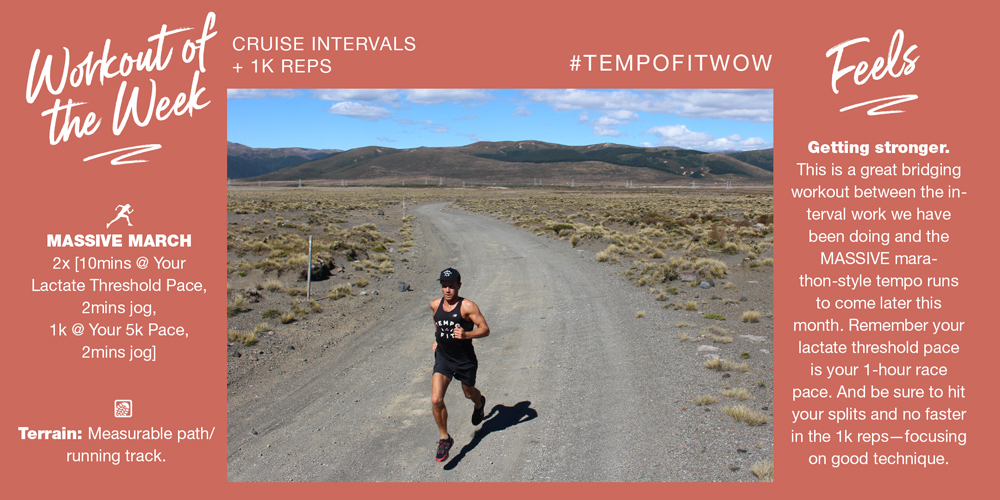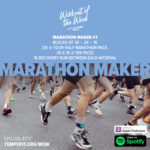
In March we are gearing up for marathon season with some serious workouts designed to get the engine running long and strong!
This first week of Massive March is an ideal transition from the faster interval sessions we have been doing into the slower but longer tempo work we will do.
WHAT
2 sets of:
[10mins @ your lactate threshold (or 1-hour race pace), 2min jog,
1k @ your 5k race pace, 2min jog]
Terrain: Running track or flat measurable path.
Feels: Getting stronger.
This is a great bridging workout between the interval work we have been doing and the MASSIVE marathon-style tempo runs to come later this month. Remember your lactate threshold pace is your 1-hour race pace. And be sure to hit your splits and no faster in the 1k reps—focusing on good technique.
WHY
It can be a real challenge mentally to shift from intervals to longer tempo runs, and today’s workout allows you to get a feel for the tempo-style workout with the 10-minute runs at threshold pace (these are sometimes called cruise intervals).
The 1k reps keep some of that speed in the length and capacity in the lungs.
HOW
There should be a noticeable difference in speed between your lactate threshold pace and your 5k pace. However, be sure to not over emphasise the speed of the 1k reps, but focus on running quick and relaxed, hitting your splits and maintaining good technique.
Use the TempoFit.org calculator to work out your paces.
THOUGHT FOR THE WEEK:
MOTION CONTROLLED SHOES
I’ve got bad arches, do I need expensive motion controlling shoes?
This is a question that opens all sorts of cans of worms from debates between physios and podiatrists to shoe marketing scams. However, the evidence seems to be clear from research, that introducing a runner to a new pair of motion control shoes doesn’t seem to reduce their risks of injury—even if they over-pronate.
Our bodies are actually extremely efficient at adapting to quirks like severe over pronation, assuming the training load is sensible.
In fact, by wearing overly structured shoes, we can actually encourage inefficiencies in our techniques that can lead to increased injury (for example, a heavier, more cushioned shoe will typically make a runner run with a slower cadence). So, it can actually help to work towards (and do so very gradually!) running in more minimalist shoes.
This is why I keep a good range of shoes on rotation—low profile one day, higher the next; structured one day, minimalist the next. It really allows my body to be exposed to different stresses and gradually adjust to wearing light weight, minimalist shoes all the time.
Got a training question? Email me!
Podcast (workout-of-the-week): Play in new window | Download
Subscribe: Apple Podcasts | RSS | More



